Former Secretary of State Mike Pompeo’s forthcoming book recounts inside details on how then-President Donald Trump’s team came to the decision in the lead-up to New Year’s 2020 to kill Iranian General Qassem Soleimani.
An excerpt of Pompeo’s book, Never Give an Inch: Fighting for the America I Love, obtained exclusively by Breitbart News, lays out the details and circumstances behind the Trump team’s moves in vivid detail. Pompeo’s book comes out next week. The subtitle of the excerpt the publisher provided exclusively to Breitbart News is, “Soleimani Tastes American Vengeance.”
“New Year’s Eve is supposed to be party time. For me and the Trump administration’s national security team, it was anything but that as the calendar approached 2020,” Pompeo writes. “We were at risk of losing our campaign of deterrence against Iran. Soleimani felt feisty enough to challenge us in part because of a diplomatic development between the United States and Turkey in October 2019. During a phone call, Turkish president Recep Tayyip Erdoğan convinced President Trump to remove US forces from the Turkey-Syria border, lest they become casualties of a Turkish military advance to push away Kurds who were fighting ISIS. Turkey has a minority Kurdish population, and, with some cause, views armed Kurds, even those in other countries, as a threat. The president sent me, Vice President Pence, National Security Advisor O’Brien, and our teams to Istanbul to negotiate the conflict zone.”
Pompeo describes the negotiations in Istanbul as a “real balancing act,” and notes the goal of the Trump officials the president sent there was “to remove US soldiers from danger” but doing so “without exposing to Turkish attack the very Kurdish forces who had been the tip of the spear against ISIS.” He says that both on the right and left in America the Trump officials were falsely accused “of abandoning the Kurds,” something he says “wasn’t true” even though he writes that the “Iranians interpreted our actions as a retreat.”
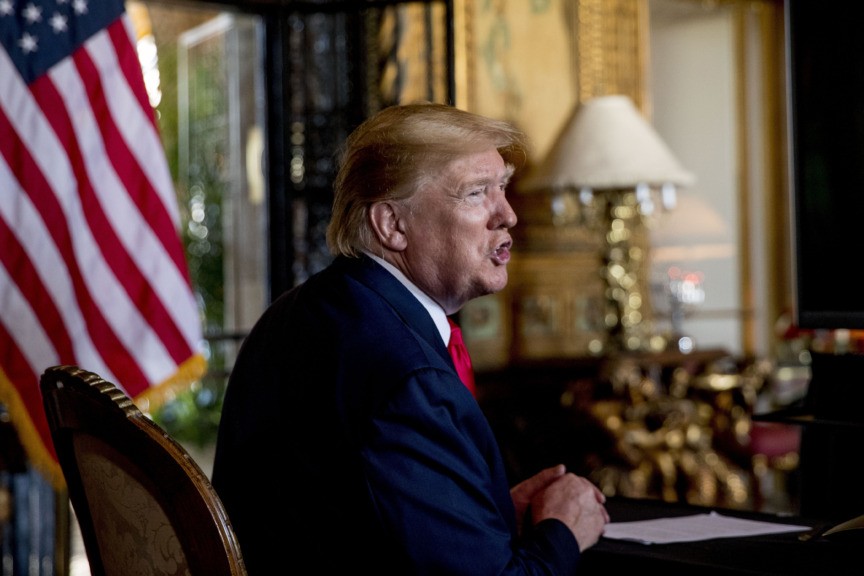
In this December 24, 2019, photo, President Donald Trump speaks to members of the media following a Christmas Eve video teleconference with members of the military at his Mar-a-Lago estate in Palm Beach, Fla. Trump says Iranian Gen. Qassem Soleimani, the target of a Friday U.S. airstrike in Iraq was “plotting to kill” many Americans. (AP Photo/Andrew Harnik)
“They were wrong, but they felt emboldened,” Pompeo writes of the top Iranian officials in Tehran.
So, in the immediate aftermath of Christmas 2019 before New Year’s, Pompeo notes, Iranian proxies began a coordinated attack on American interests in the region. “On December 27, a Shia-militia group conducted a rocket attack on an American installation in Kirkuk, Iraq, killing Nawres Hamid, an American contractor, and wounding American soldiers,” Pompeo writes.
In response, he writes, the U.S. retaliated with airstrikes on Iranian proxies. “We decided to retaliate with air strikes in Iraq and Syria, targeting members of the Kata’ib Hezbollah terrorist group, one of the main Iranian proxy groups,” Pompeo writes. “We took out twenty-five of them.”
That response, however, he noted had proved “inadequate to stem the rising tide of Iranian aggression.”
“The time had come to stay true to what I had said earlier that month: ‘We must also use this opportunity to remind Iran’s leaders that any attacks by them, or their proxies of any identity, that harm Americans, our allies, or our interests will be answered with a decisive US response,’” Pompeo writes.
So, he notes, with Iran intentionally killing an American “it became clear that the time for that decisive response had come.”
Then, Pompeo prepared the entire Trump national security team with a bold recommendation he intended to take to the president. He called then-CIA Director Gina Haspel, Defense Secretary Mark Esper, the chairman of the Joint Chiefs of Staff Gen. Mark Milley, and National Security Adviser Robert O’Brien.
“All were on board with the plan, some of which was a direct result of work that had been set in motion sometime prior,” Pompeo writes. “God’s hand was on this, too.”
On December 29, Pompeo, Esper, and Milley flew to Palm Beach, Florida, where the president was spending the holidays at his Mar-a-Lago resort, to brief him on the idea and the plan. “I took the lead at the meeting,” Pompeo writes.
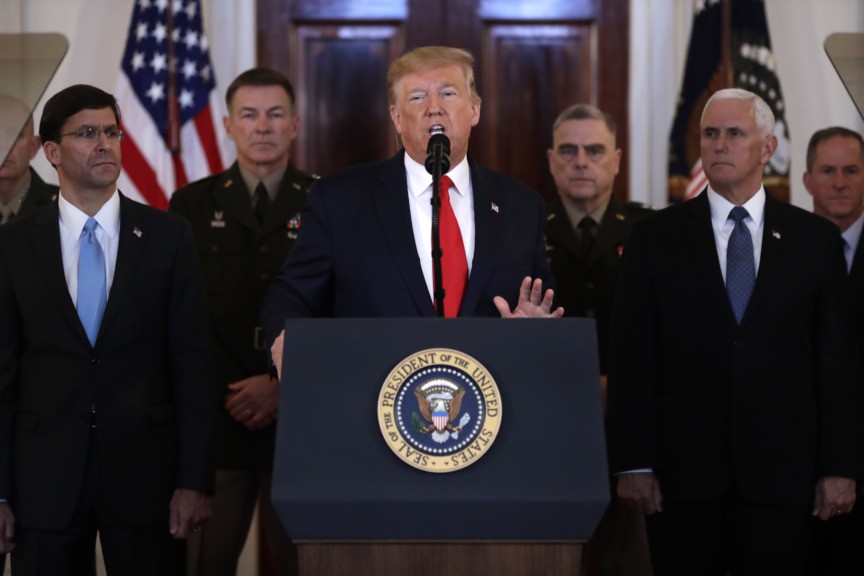
President Donald Trump addresses the nation from the White House on the ballistic missile strike that Iran launched against Iraqi air bases housing U.S. troops, Wednesday, January 8, 2020, in Washington, as Secretary of Defense Mark Esper, Chairman of the Joint Chiefs of Staff Gen. Mark Milley, and Vice President Mike Pence, and others look on. (AP Photo/ Evan Vucci)
Pompeo describes what he told President Trump then. “Mr. President,” Pompeo writes that he told Trump, “Soleimani is traveling from Beirut to Damascus to Baghdad. He’s flying on commercial flights, and we know his flight path. He is plotting to kill even more Americans. We have the tools needed to stop him from leading these murderous efforts. They shot down two American UAVs, fired ballistic missiles into Saudi Arabia, and now have killed an American—all at the direction of General Soleimani. It’s time to stop his murderous reign. This is a legit military target.”
Pompeo next describes how strikes in the modern era against terrorist leaders have generally fared—which is usually another person just steps up and replaces them and business as usual commences—as compared with how the Trump officials expect this one to go if they successfully took out Soleimani. “Trying to replace him [Soleimani] would be like trying to replace an original Rembrandt,” Pompeo writes, noting that Soleimani’s “combination of authority, brains, brutality, and public appeal inside Iran” was unique among terror leaders in the post-9/11 era and that Iran would have difficulty replacing him as “there is simply no good substitute.”
“President Trump understood the big risks. So did we all. But it was time to pull the trigger,” Pompeo writes. “We had warned the Iranians publicly. I’d sent Soleimani a letter directly. They thought they could get away with downing an American unmanned aerial vehicle, and they more or less did. The Iranian regime had brazenly fired ballistic missiles from their own soil in hopes of taking down the world’s oil supply at a site with many Americans. And they had killed an American. Doing nothing would have shattered American credibility. Deterrence was at an ebb.”
From there, Pompeo notes, the meeting with Trump progressed to where Milley and Esper—the top defense officials present—briefed the president on the plan to strike the Iranian general. Pompeo also explains that in the aftermath of a successful such strike “we were prepared to communicate directly with the Iranians” in order “to make clear that this was not an attempt to decapitate the regime but that we were prepared to escalate if that was their wish.” He writes that he told the president other American adversaries would be watching, including the Chinese Communist Party (CCP), the Russians, and North Korean leader Kim Jong-un.
“He gave his answer: Let’s go,” Pompeo writes of Trump’s order to kill Soleimani.
“As we got up, I said, almost as an afterthought, ‘Mr. President, one more reminder, we will be commanding a missile from six thousand miles away to strike an international airport. We haven’t done this before,’” Pompeo writes. “I was comfortable with the risk, as we had a plan for controlling the air-space for the most important five minutes. The only civilians potentially in harm’s way would be those on Soleimani’s commercial aircraft. We would wait for Soleimani to deplane, enter his vehicle, and get as far away as possible from that aircraft before leaving the airport confines. The president looked straight at us and nodded his head. He didn’t say a word, but his eyes screamed, ‘Do not f—— this up.’”
They set the strike plans in motion for January 3, 2020, and began preparing the cross-government effort for handling the actual strike and the aftermath by coordinating the proper agencies and personnel and allies and partners around the world. In the days after Trump gave the order to kill Soleimani, the Iranian proxies in the region continued their escalation they had begun days earlier with December 31, 2019, advances on the U.S. embassy in Baghdad, Iraq.

Iraqi forces take security measures as crowd leave the site after Iranian-backed Hashd al-Shaabi group urges its members to withdraw from around U.S. Embassy in Baghdad, Iraq, on January 1, 2020. (Murtadha Sudani/Anadolu Agency via Getty Images)
“Operating at the ultimate direction of Soleimani and the Iranians, dozens, and later hundreds, of Kata’ib Hezbollah forces and other Shia militiamen stormed the American embassy in Baghdad,” Pompeo writes. “They massed at the embassy’s security checkpoint and smashed through doors and windows, vandalizing the reception area and setting it ablaze, all while chanting ‘Death to America!’ and ‘Death to Israel!’ Thankfully, with the help of verbal warnings and tear gas, our guards dispersed the rioters before they were able to breach the embassy’s main wall.”
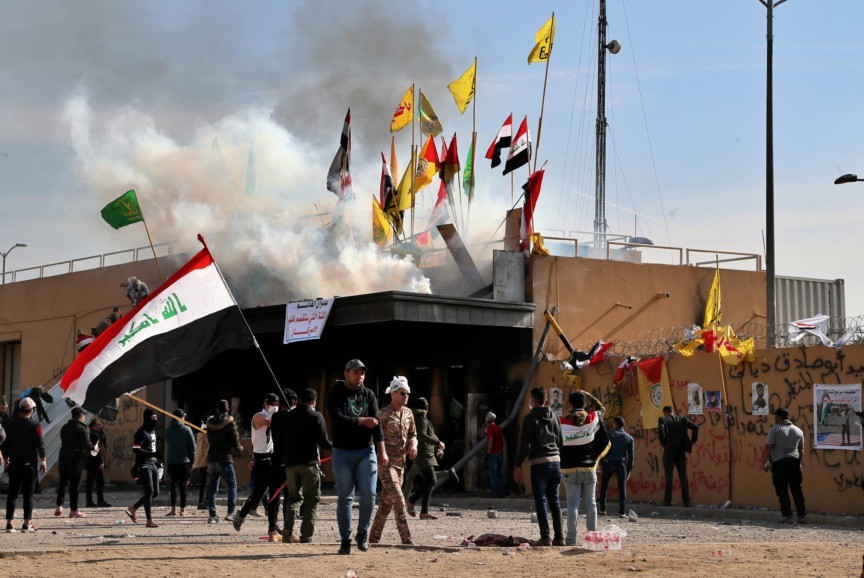
Pro-Iranian militiamen and their supporters set a fire while U.S. soldiers fired tear gas during a sit-in in front of the U.S. embassy in Baghdad, Iraq, Wednesday, Jan. 1, 2020. (AP Photo/Khalid Mohammed)
But this incident, Pompeo writes, made it clear the president’s decision days earlier to set in motion the forthcoming strike to kill Soleimani “looked even more right.”
“Back in America, we prepared for the strike,” Pompeo writes. “At the appointed moment, I was with Esper and Milley at the Pentagon. The president was in Florida. We went through the final approval process that morning and tracked Soleimani’s movements.”
U.S intelligence assets, he writes, tracked Soleimani “as he moved from one Mideast warzone to another, and we had a bead on him.” Soleimani landed at Baghdad’s airport just after midnight local time, where Pompeo writes “he received a hero’s welcome from Abu Mahdi al-Muhandis, the founder of Kata’ib Hezbollah and now the head of a powerful group of Shiite militias in Iran.”
“Little did he know that an American MQ-9 Reaper drone was tracking their every move from above,” Pompeo writes. “As Soleimani’s sedan departed the airport on an access road, Hellfire missiles came screaming down. American power, American technology, and American justice slammed into his vehicle. American deterrence struck, and Soleimani would never hurt anybody ever again.”
Social media reports began to “erupt,” he continues, with details of an “explosion at Baghdad International Airport.”
“The Iranians soon confirmed that their evil hero was dead,” Pompeo writes. “Around the world, we were ready for vengeful attacks on US facilities. The Israelis also were ready, knowing that Iran could choose to retaliate against them. In the same way, we had worked with our Gulf Arab partners, giving them a heads-up without revealing our specific plans.”
Pompeo writes that he had passed a message to the Iranians. “Within a few hours, Iran lobbed ballistic missiles at Al Asad Airbase in Iraq,” Pompeo writes. “The missile strike injured US service members, some seriously, but no one was killed. Afterward, I received a note from my Iranian counterpart via the Swiss that this was the totality of the Iranian response. A relief to be sure, as well as more proof that we controlled the escalation ladder.”
While the Iranians said to him that was the end of the response through that Swiss channel, Pompeo notes the Trump team was not entirely certain that was the end of their response so Trump took to Twitter to reinforce “our kinetic deterrence with rhetorical deterrence.”
“For good measure, I sent a letter to the ayatollah on behalf of the United States, informing him that we were closely monitoring the activities of the Shia militias in Iraq and Syria,” Pompeo adds. “I said that any attack on American forces would be directly attributed to him and Iran, and that the American response would come down against all those to whom the attacks could be attributed. Soon we could see that the Shia militias in Iraq had been ordered to stand down.”
Democrats including then-House Speaker Nancy Pelosi and now-President Joe Biden among others melted down in Washington, claiming that Trump’s actions could have sparked a major war in the region.
Pompeo says that in hindsight it is clear the critics were wrong. “Let’s review the tape, as they say, on the consequences of the Soleimani strike. Did our deterrence work? Would it have been better to appease the Iranians?” Pompeo writes. “The skeptics couldn’t have been more wrong. Instead of igniting a new war, our bold actions had in fact de-escalated the situation. We protected American lives from a terrorist who was orchestrating further harm in the days and hours before his death. Iran got the message that if its aggression continued, there would be even more hell to pay. And in the context of our Iran strategy, it made perfect sense to cut off the head of the octopus that had wrapped its tentacles around nearly every Middle Eastern nation. It would make subsequent efforts to dismember the remaining parts easier. We can also look at the behavior of Kim, Putin, and Xi after this strike—and add Venezuela’s Nicolás Maduro to the list. We not only punished Iran, but all these leaders understood our deterrent power much better on January 4 than they did on January 3. It was a collateral benefit of going on offense.”
Pompeo also reveals that two years after leaving office he still needs a security detail for everywhere he goes because the Iranians seek to exact revenge on him and Trump for this strike that killed Soleimani.
“To this day, the Iranian regime is still hungry for revenge over the killing of their revered warlord,” Pompeo writes. “The very president of Iran, Ebrahim Raisi, has proclaimed, ’If Trump and Pompeo are not tried in a fair court for the criminal act of assassinating General Soleimani, Muslims will take our martyr’s revenge.’ Likewise, the head of the IRGC navy has stated: ‘The supreme leader has emphasized revenge, and the IRGC’s overall commander has said that revenge is inevitable, and we will determine when and where revenge takes place . . . All the perpetrators of the assassination of martyr Soleimani will surely be punished in this world for their dirty deed.’”
“We know Iran has the capabilities to operate inside the United States, so a year and a half after leaving public service, I still retain a security detail,” Pompeo continues. “Trip to the grocery store? Diplomatic security will shadow me while I evaluate which eggplant looks the ripest. Susan’s going to get her hair done? Let’s hope Hezbollah sleeper agents aren’t casing the salon. Son’s getting married? Agents will need to send an advance team to the church. Every day, everything my family and I do is preplanned and coordinated with the people in suits and sunglasses (and we are profoundly thankful to those great Americans who protect us). On at least one occasion my son’s day has been massively disrupted because of security concerns. I will probably never drive my own car again or enjoy the level of privacy that I once had.”
But Pompeo says he does not mind the consequences.
“So be it. Beyond these inconveniences, these threats, this fatwa, has not caused me to alter my life one bit,” Pompeo writes. “Refusing to appease evil comes at a price for individuals, such as our service members, for families, and for our country. But standing up to a rogue nation and its evil terrorists determined to kill Americans is worth it. I bought the oil filter. And I am confident that we saved American lives.”
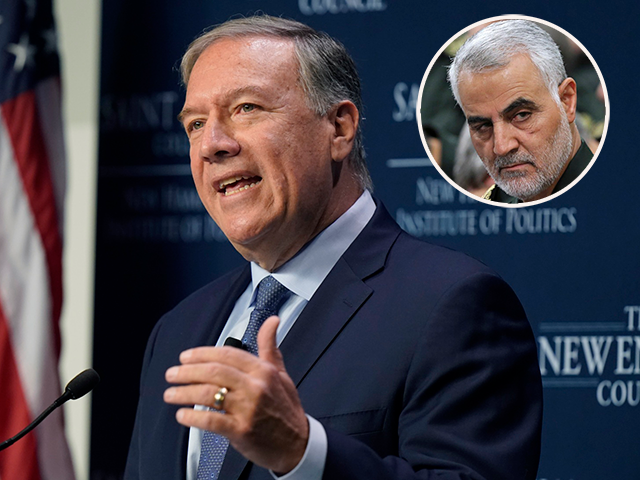
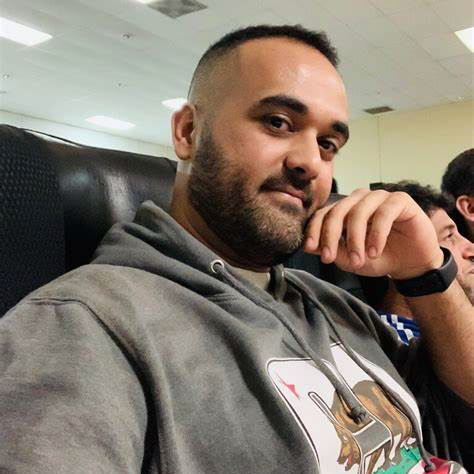
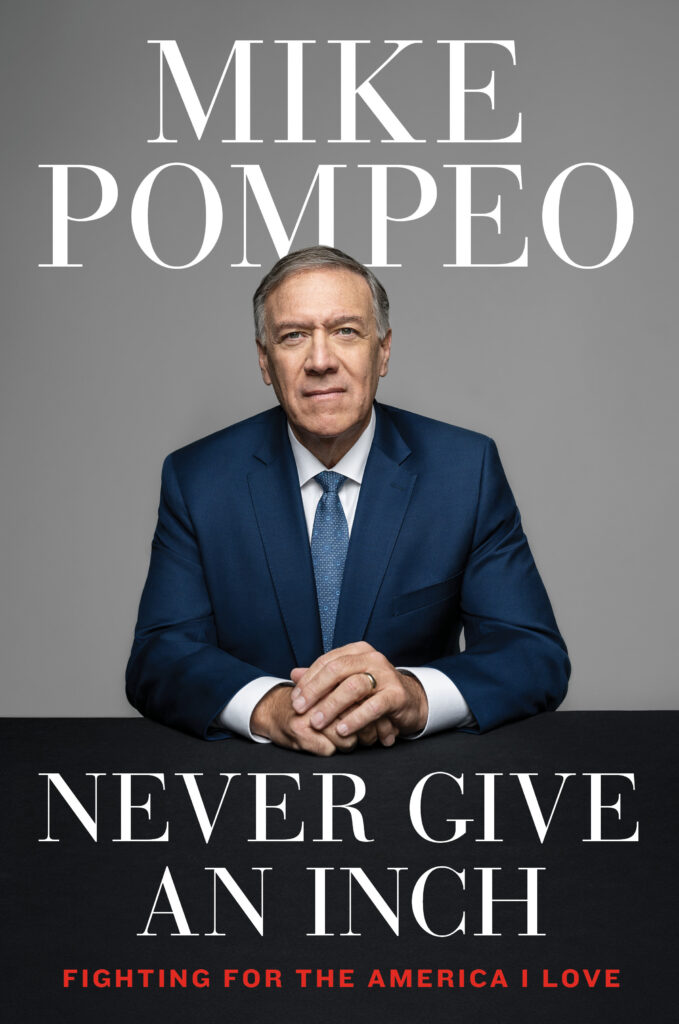
COMMENTS
Please let us know if you're having issues with commenting.